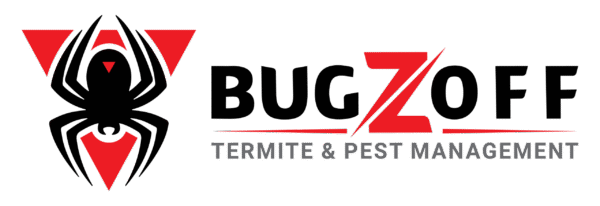Ants
Ants – A Persistent Pest in Sydney Homes and Businesses
Ants are one of the most common and resilient household pests in Sydney, frequently invading homes, businesses, and outdoor areas in search of food, water, and shelter. While Australia is home to over 4,000 species of ants, only a small fraction of them are considered pests. These invasive species can quickly establish colonies in gardens, inside walls, and even within electrical wiring, creating major nuisances and potential health risks.
At BUGZOFF Pest Control, we specialize in professional ant control solutions to help homeowners and businesses in Sydney and surrounding areas effectively manage and eliminate ant infestations.
Why Are Ants Considered Pests?
Ants are social insects that live in highly organized colonies, often containing hundreds of thousands or even millions of individuals. When a food source is found, worker ants leave a chemical trail (pheromones) for others to follow, resulting in large numbers of ants appearing almost instantly.
Common Problems Caused by Ants in Sydney
- Food Contamination: Ants forage for food, contaminating kitchen surfaces, pantries, and food storage areas.
- Structural Damage: Some ant species, such as carpenter ants, burrow into wood and damp timber, potentially weakening structures.
- Garden Damage: Certain ant species build mounds in gardens, lawns, and between pavers, disrupting plant roots and paving.
- Electrical Damage: Some species, including Singapore ants, are attracted to electrical wiring and power sockets, leading to potential fire hazards.
- Painful Bites and Stings: Ants like coastal brown ants and Singapore ants have painful stings, which can cause allergic reactions in some individuals.
Ant infestations can quickly grow out of control, making professional intervention essential for long-term protection.
Common Pest Ant Species in Sydney
Sydney is home to several invasive ant species that frequently cause problems for homeowners, businesses, and outdoor areas.
- Argentine Ants (Linepithema Humile)
- Light to dark brown, 1.5–3mm in size.
- Prefers moist environments; commonly found in gardens, walls, and under paving stones.
- They form large colonies with multiple queens, making them challenging to control.
- Attracted to sweet foods, meats, and household waste.
- Infests homes and businesses, contaminates food, and aggressively outcompetes native ants.
- Black House Ants (Ochetellus glaber)
- Glossy black, 2.5–3mm in size.
- Frequently nests in walls, under paving, and in gardens.
- Highly adaptable and attracted to sugary foods.
- It is a common household nuisance, spreads bacteria, and invades pantries.
- Carpenter Ants (Camponotus spp.)
- Large ants, varying in colour (black, brown, or red), 2.5–14mm in size.
- Prefers rotting wood, damp timber, and garden beds.
- Excavates tunnels inside timber, which can weaken wooden structures.
- Can cause structural damage, but does not eat wood like termites.
- Coastal Brown Ants (Pheidole megacephala)
- Shiny brown, 1.5–3mm in size, with larger soldier ants reaching 4.5mm.
- Common in lawns, pavers, driveways, and gardens.
- Highly territorial, builds large outdoor nests, and forms trails into buildings.
- Aggressive and difficult to eliminate, with painful stings.
- Pharaoh Ants (Monomorium pharaonis)
- Yellow-brown ants, 1.5–3mm in size.
- Typically found in hospitals, aged-care facilities, and food establishments.
- Forms hidden nests within wall cavities, electrical boxes, and furniture.
- Difficult to eradicate and a health risk in medical environments.
- Singapore Ants (Monomorium destructor)
- Light brown ants, 1.5–3mm in size.
- Prefers electrical appliances, power sockets, and wiring.
- Causes electrical faults and fire hazards due to wire damage.
- Known for damaging electronics in homes and businesses.
- White-Footed House Ants (Technomyrmex albipes)
- Shiny black with pale legs, 2.8–3.5mm in size.
- Common in moist environments, kitchens, and outdoor gardens.
- Prefers sweet foods and often enters homes in large numbers.
- Difficult to eliminate, requiring specialized treatment methods.
Signs of an Ant Infestation
Detecting an ant infestation early can prevent a full-blown invasion. Look out for these signs:
- Visible ant trails leading to food or water sources.
- Large numbers of ants in kitchens, pantries, or near pet food bowls.
- Nest sites inside walls, garden beds, or under paving.
- Sawdust-like material near wooden structures (carpenter ants).
- Electrical issues caused by ants in power sockets or appliances.
How to Prevent and Control Ant Infestations
- Sanitation & Food Storage
- Clean up food crumbs and spills immediately.
- Store food in airtight containers to prevent contamination.
- Remove pet food bowls after feeding to discourage ants.
- Exclusion & Entry Point Sealing
- Seal cracks and gaps around doors, windows, and walls.
- Install door sweeps and repair damaged screens to block entry points.
- Trim vegetation and trees away from the house to reduce access points.
- Ant Baiting & Chemical Treatments
- Use ant baits strategically to target foraging ants and eliminate colonies.
- Apply perimeter treatments around the house to create a barrier.
- Avoid DIY insecticide sprays, which can cause colonies to split and relocate.
- Professional Ant Control
For severe or recurring infestations, expert pest control is necessary. Ant species like Argentine ants and Singapore ants require specialized treatment plans to prevent reinfestation.
How BUGZOFF Can Help with Ant Control
At BUGZOFF Pest Control, we provide tailored ant treatment plans designed to effectively eliminate infestations and prevent future problems.
Our Ant Control Services Include:
- Comprehensive property inspection to identify the ant species, nest locations, and entry points.
- Customized treatment plans with strategic baiting, barrier treatments, and targeted solutions.
- Safe and effective ant control methods designed for Sydney’s climate.
- Ongoing monitoring and maintenance to keep your property ant-free.
Eliminate Ants from Your Home or Business Today
Ant infestations can quickly escalate, leading to food contamination, property damage, and electrical hazards. Don’t wait until the problem gets worse—act now!
At BUGZOFF Pest Control, we have proven solutions to tackle all ant species in Sydney, providing fast, effective, and long-lasting results.
Contact BUGZOFF Pest Control today for a professional ant control inspection and treatment plan.
Frequently Asked Questions
What are the different types of ants that can be found in Australia?
Australia is home to over 4,000 ant species, but only a handful are considered pests. Common pest ants include Argentine ants, black house ants, carpenter ants, coastal brown ants, Pharaoh’s ants, Singapore ants, and white-footed house ants.
How can I identify the type of ant I have?
Identifying the type of ant can be helpful in determining the best course of action. You can try to take a photo of the ant or consult a local pest control professional for assistance.
What are the signs of an ant infestation?
Signs of an ant infestation include trails of ants, ants foraging for food, ant nests, damaged wood (for carpenter ants), and piles of soil (for some ant species).
Are ants harmful to humans?
Most ants are not harmful to humans, but some can be a nuisance or cause damage to property. A few ant species, such as fire ants, can inflict painful stings.
Prevention and Control
How can I prevent ants from entering my home?
Sealing cracks and crevices in your home, keeping food areas clean, and eliminating water sources can help prevent ant infestations.
What can I do if I have an ant infestation?
If you have an ant infestation, you can try to control it yourself using baits, traps, or insecticides. However, for severe infestations or persistent problems, it’s recommended to contact a professional pest control service.
Are there any natural remedies for ant control?
Some natural remedies, such as diatomaceous earth or citrus-scented cleaners, may be effective in deterring ants. However, they may not be as effective as professional pest control methods.
How often should I have my home treated for ants?
The frequency of treatments depends on the severity of the infestation and the type of ants involved. A professional pest control service can recommend a treatment schedule.


